Introduction to Concurrent Programming
Moore's Law
Moore’s law isn’t really a law but rather an observation by Gordon Moore in 1965 that the number of transistors on a microchip/CPU doubles about every year which would lead to exponential growth.
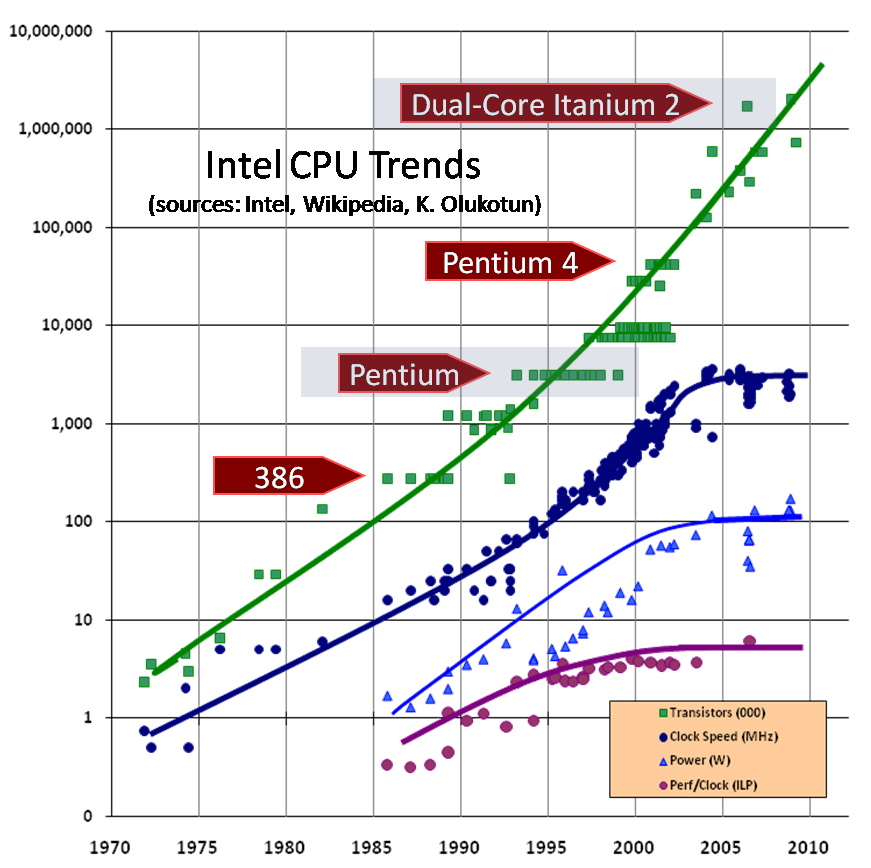
We can also observe this but there is a reason why people say that Moore's law is dead. Apart from the transistor amount, everything else has slowly leveled out, meaning we can't get much more out of our CPUs, instead we can have multi-core CPUs which will have no impact on most current applications as they do not make use of concurrent programming. But if they would they could gain a massive speedup.
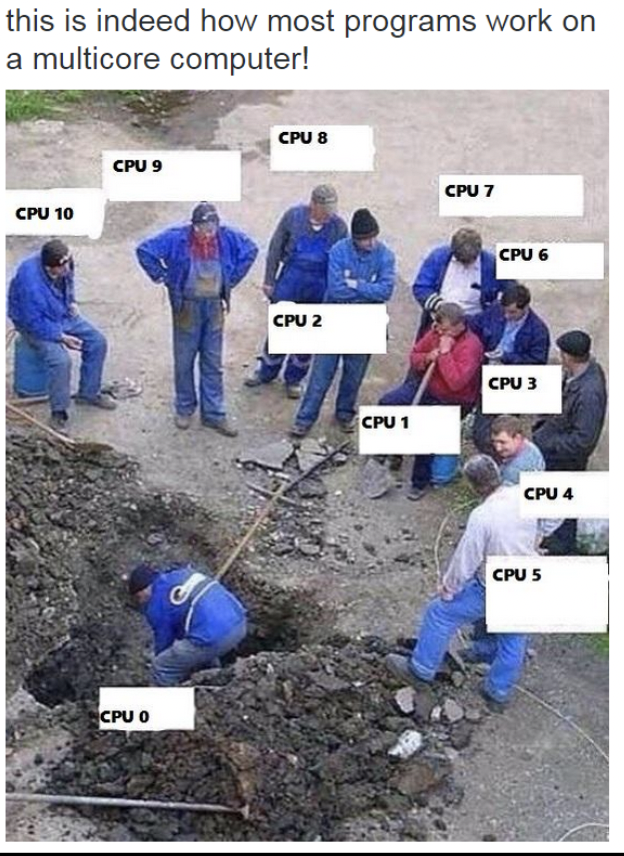
Amdahl's Law
Amdahl's law is a formula to predict the maximum speedup using a multi-core CPU with processors/cores based on the proportion of parallelizable components of a program and the serial components :
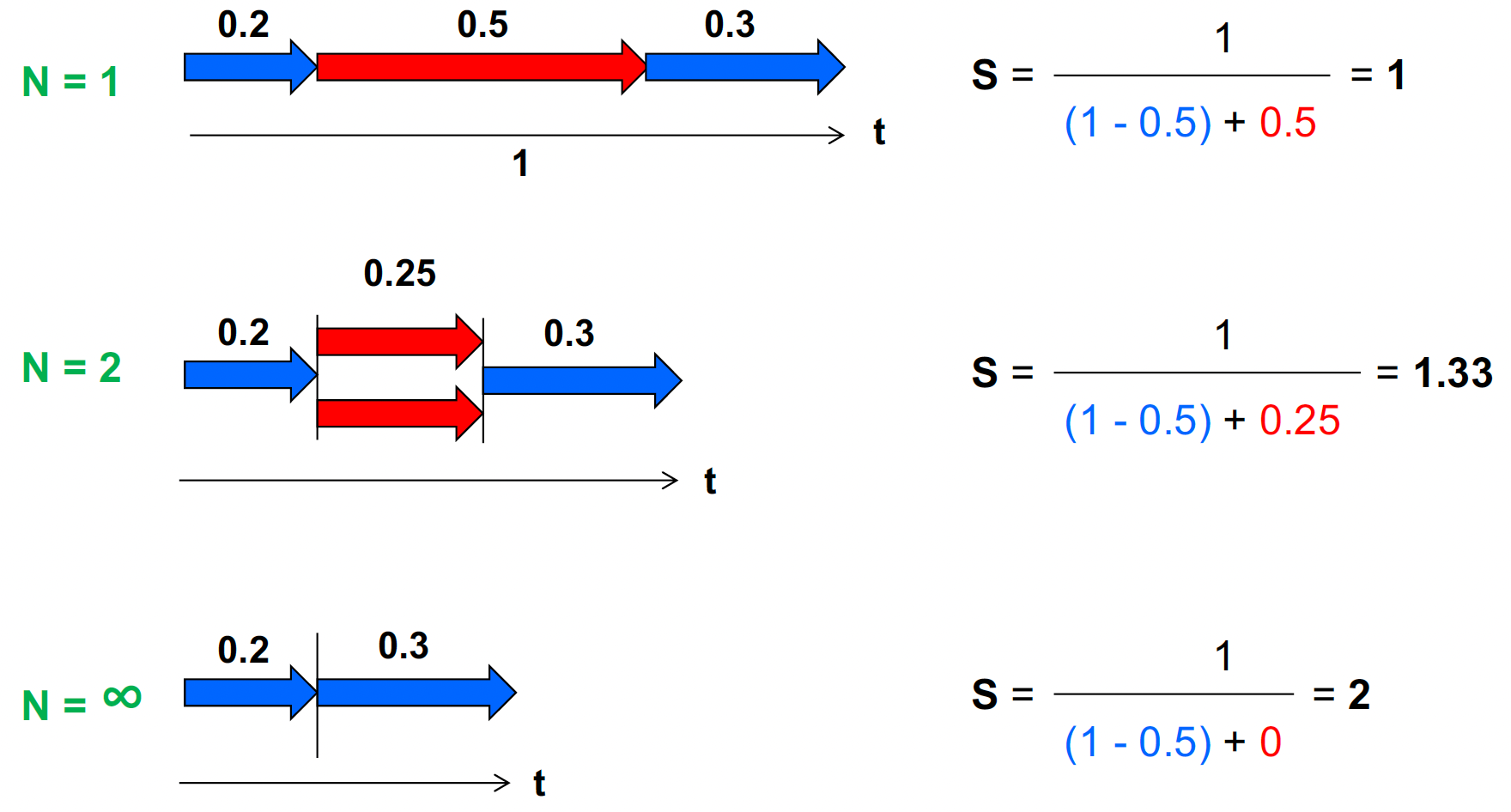
When looking at the potential speedup depending on the proportion of parallelizable components and processors we can see after a certain point around the 64 mark the gain becomes very little.
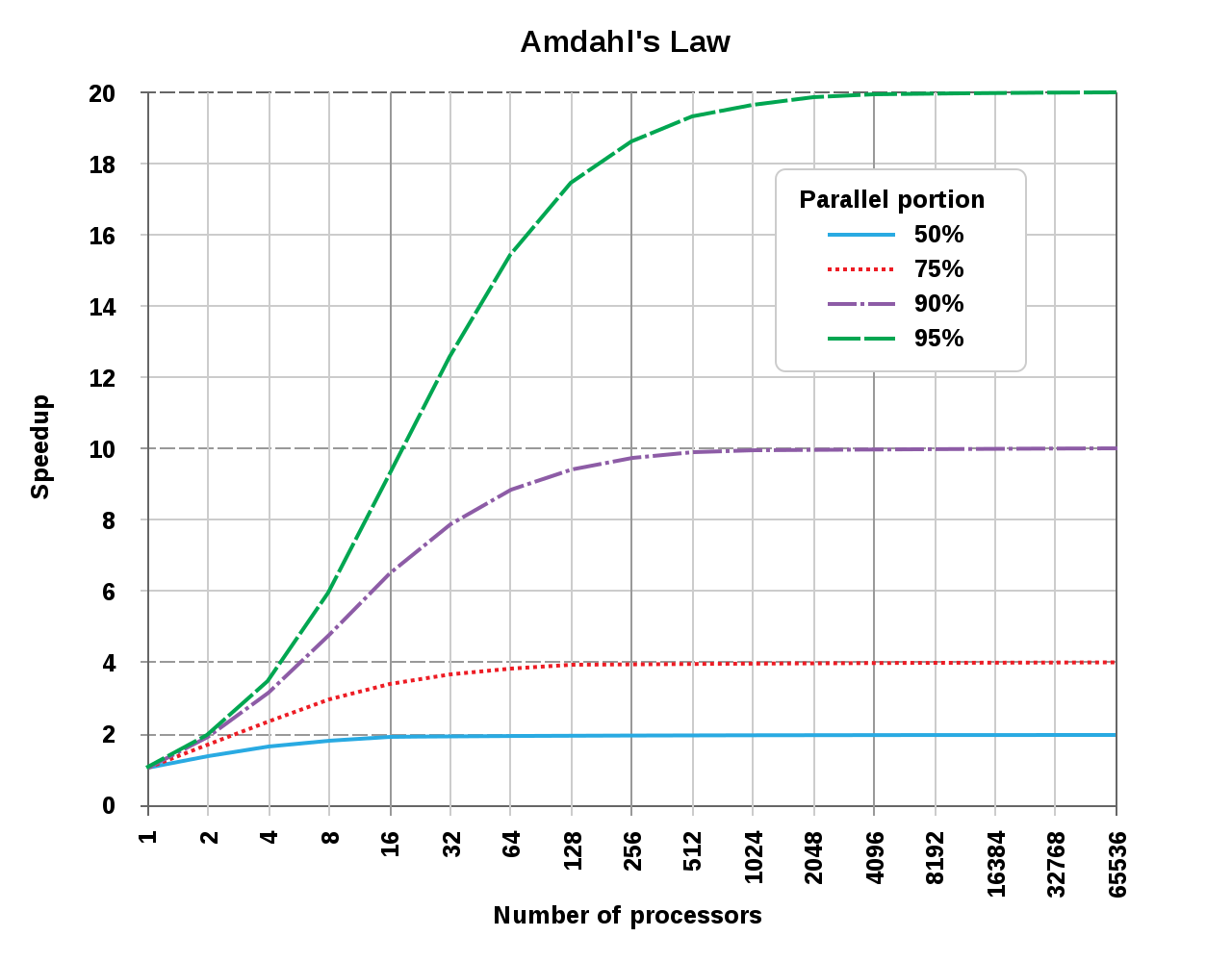
Concurrent Programming
When talking about programs there are three main subsets: serial programs, concurrent programs and parallel programs.
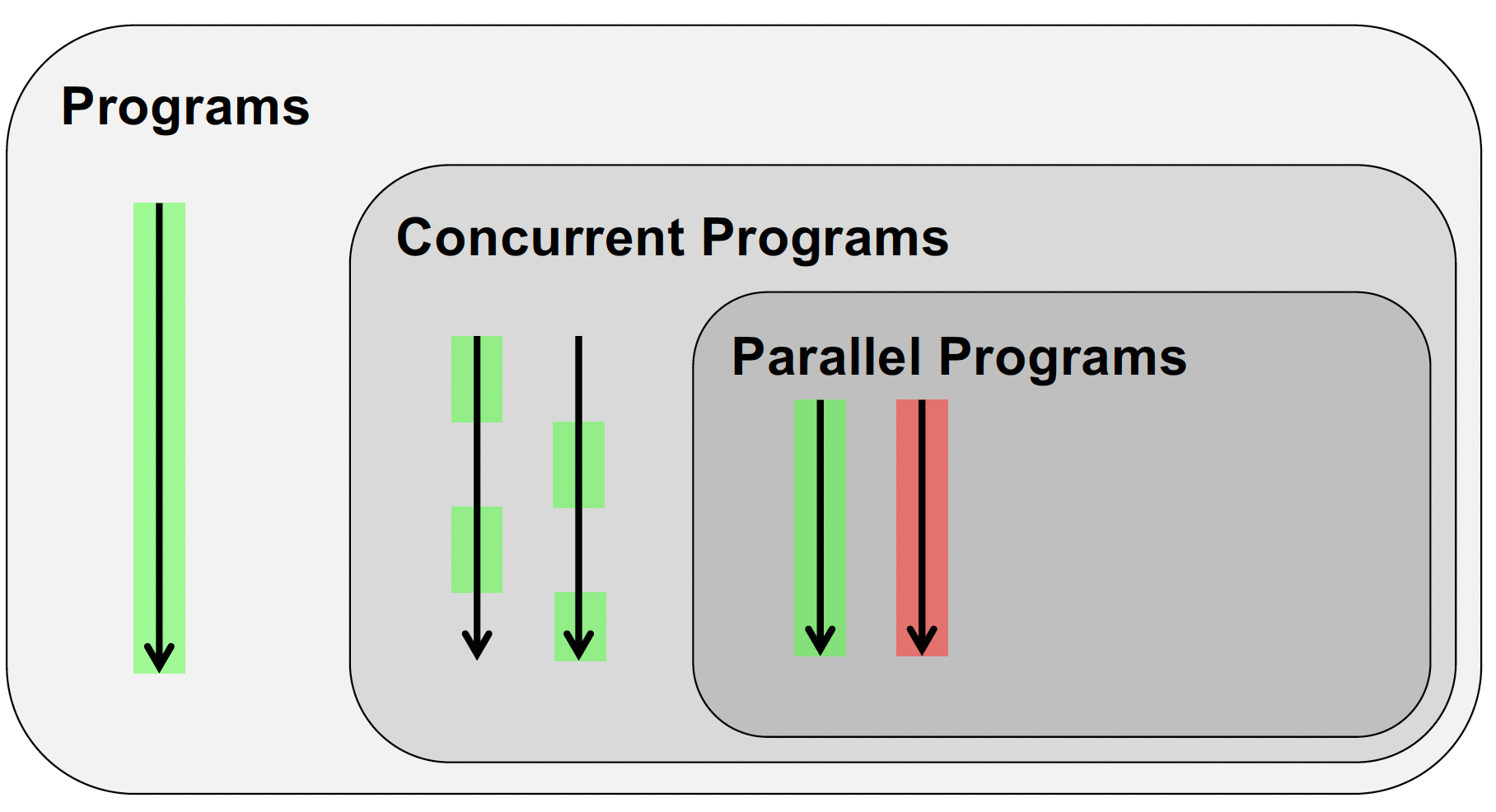
Concurrent programs have multiple logical threads whereas serial programs just have one. To solve a problem concurrently need to handle events that could happen at the same time. Because of this concurrent programs are often non-deterministic, meaning results depend on the timing of events. Parallel programs compute components simultaneously so in parallel. To solve a problem with parallelism you need to break the problem down into pieces that can be done in parallel. Concurrent programs aren't necessarily parallel but being concurrent is a precondition for a parallel program.
